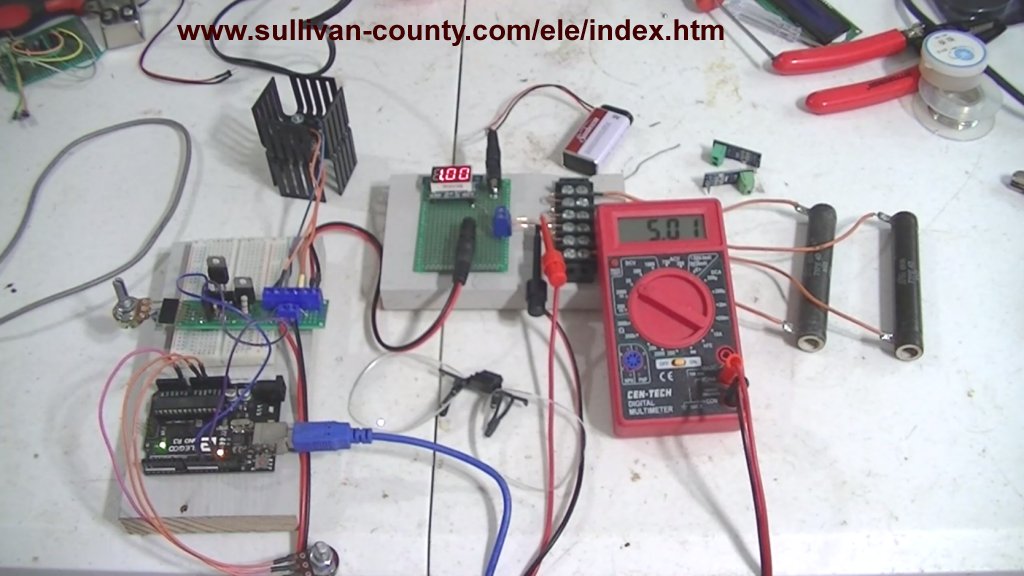Arduino Controlled Power Constant Current Source
by Lewis Loflin
Note: click on any image for larger view.
Adding a single switching transistor enables microcontroller control of the output. Current limit can also be set.
For more on the original constant current source see Constant Current Source Theory Testing.
The original CCS circuit is shown in Fig. 2. The LM317 circuit sets the emitter-base current. This controls the emitter-collector current through Q1.
By adding a TIP120 transistor to the ground circuit enable an Arduino to switch the circuit ON-OFF. This also enables the use of pulse-width-modulation to control the output.
Iset now determines maximum current while Arduino or other microcontroller controls overall power output.
Fig. 4 is the circuit used in the demo video.
Fig. 5 are the load connections in the test circuit.
Code
#define pwmPin 11
int val;
void setup() {
// put your setup code here, to run once:
digitalWrite(pwmPin, 0);
}
void loop() {
// put your main code here, to run repeatedly:
val = analogRead(0) / 4;
analogWrite(pwmPin, val);
delay(100);
}
Date: 7-11-2021
- Constant Current Source Theory Testing
- Arduino Measures Current from Constant Current Source
- Review Ohm's Law for Trouble-Shooting CCS Circuits
- Arduino Power Magnetic Driver Board for Stepper Motors
- Arduino Controlled Power Constant Current Source
Related video to above:
- Constant Current Source Multimeter Trouble Shooting
- Ohm's Law Review for Constant Current Source
- Arduino Unipolar Stepper Motor Driver Board with Arduino Code
- Arduino Controlled Constant Current Source
- Related to above:
- Using a Unipolar Stepper Motor with a Arduino
- ULN2003A Darlington Transistor Array with Circuit Examples
- Tutorial Using TIP120 and TIP125 Power Darlington Transistors
- YouTube
- ULN2003A Transistor Array with Arduino
- Arduino Stepper Motor Control
- Using the TIP120 & TIP125 Darlington Transistors with Arduino
- Constant Current Circuits with LM317, LM334, etc.
- Experiments with TL431 Shunt Regulator
- TL431 Precision Current Regulator Circuits
- TL431 Based Current Limiter Constant Current Source Circuits
- TL431 Shunt Regulator Circuits
- Simple Triac-SCR Test Lab for You Tube
- Constant Current Circuits with the LM334
- LM334 CCS Circuits with Thermistors, Photocells
- LM317 High Power Constant Current Source Circuit
- LM317 Constant Current Source Circuits
- LM317 Adjustable Voltage Source Current Boost
- LM317 Constant Current Source for Lighting LEDs
- 3 Amp LM741 Op-Amp Constant Current Source




